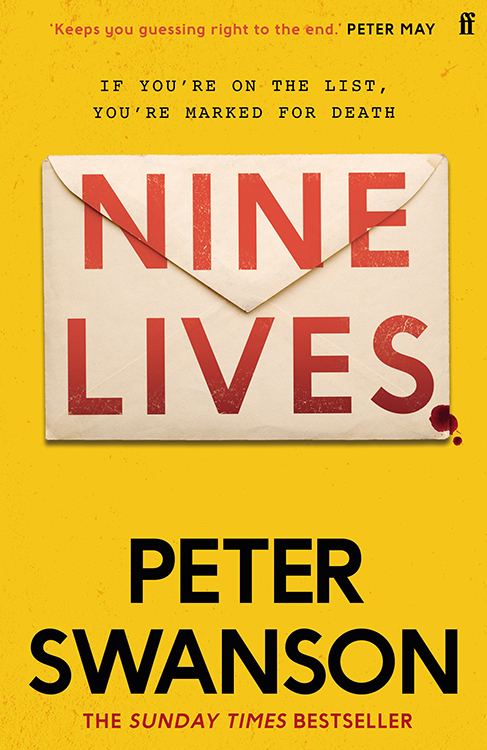Features
Agatha Christie, Playwright

This piece was written by author Peter Swanson
The first play I remember seeing was The Mousetrap in London when I was ten years old. It’s possible I’d gone to see something else before this, but if I did, I don’t remember it. But The Mousetrap made an impression. A group of guests trapped by a snowstorm in a country inn. A murderer on the loose. That creepy whistling that closes the first act. And then there’s that moment toward the end that makes the entire audience—grown-ups who should have known better—all gasp at the same time. I was probably told by my parents that I was seeing the longest running play of all time, clocking in at about 11,000 performances at the time I saw it. That number is hovering around 28,500 at the moment. Covid shuttered the play for a while but it’s back up and running now, with no signs of stopping.
It doesn’t quite seem fair that Agatha Christie, the most successful novelist of all time, also penned the longest-running play of all time. But it’s not as though she dashed off The Mousetrap as a lark between writing bestsellers. She was a serious playwright for most of her career, crafting over twenty full-length plays, most, but not all of them, adaptations of her novels and short stories. At one point in her playwriting career, she had three West End productions happening at the same time: The Mousetrap, Witness for the Prosecution, and Spider’s Web.
As it happens, two out of those three plays are currently playing in London. The Mousetrap, of course, in all its cozy, snowbound glory, and a clever, sumptuous new production of Witness for the Production at London County Hall. I saw it recently and it’s a great night out at the theatre. There’s a particularly clever bit toward the end of the second act that I’ll remember for a long time, but I’ll also recall the three young girls—I’d place them in the ten- to twelve-year-old range—getting ice creams at intermission and making their wildly enthusiastic predictions for who might the real killer be (they were all wrong, by the way).

I think it’s easy to consider these plays as just a simple extension of Christie’s skill as a novelist and story writer. The ingredients are the same: A crime, a detective figure, red herrings, and a surprising villain. But writing for the theatre is simply not the same as writing prose. There are so many other considerations; the movement, the dialogue, and the pacing have to be carefully tailored for the stage. It’s like making a watch, every gear needs to be in perfect working order or it simply won’t work. And because of this, there are only a few classics. There’s Angel Street by Patrick Hamilton (filmed twice with Gaslight as the title), Dial M for Murder and Wait Until Dark, both by Frederick Knott, Sleuth by Anthony Schaffer, and Deathtrap by Ira Levin. And then there’s Christie, with her two classics, not to mention a slew of great stage adaptations of her novels, such as And Then There Were None (with a different ending from the book!) and Murder on the Nile.
Not only are her plays suspenseful and surprising, but they are great examples of Christie’s often overlooked humor. They are filled with comic characters and black humour. Spider’s Web, perhaps not a classic, but a highly entertaining play, is maybe the funniest of the lot, with a dead body that keeps disappearing and reappearing throughout the play. Christie gets a lot of laughs by playing up the blasé attitudes of her country house denizens, none of them too fazed by the dead body in the library.
But what truly sets Christie apart from the competition, both in her novels and with her plays, is her misdirection. I think of that all the time when I’m writing my own books—how do I make the readers pay attention to the wrong things while also providing clues as to what is actually happening in the plot. Christie is the master of this particular magician’s trick. And in many ways these tricks are so much harder to do with a play, where the audience, already primed to outwit the playwright, have a full view of everything happening on the stage.
If you can’t make it to London to see either of the two current Christie productions, there are always a few film versions worth checking it. The best is Billy Wilder’s adaptation of Witness for the Prosecution, with an excellent Charles Laughton as the barrister defending Tyrone Power in the role of murder suspect Leonard Vole. Plus there are two decent versions of Spider’s Web, one from 1960 with Glynis Johns in the lead role and a television movie from 1982 with Penelope Keith that follows the play exactly as it was written.
As for The Mousetrap, there is really only one way to see it, and that is by buying a theatre ticket. When the original movie rights were sold, back in 1956, there was a stipulation: A film could only be made six months after the end of the original theatrical run. The producers are still waiting for that day to happen.

Peter Swanson's novels include The Girl With a Clock for a Heart, nominated for an LA Times book award, The Kind Worth Killing, a Richard and Judy pick and the iBooks store’s thriller of the year; Rules for Perfect Murders, the 2020 Richard and Judy Pick; and most recently Every Vow You Break. He lives with his wife and cat on the north coast of Massachusetts
His latest novel, Nine Lives, is out now.


 UK
UK 